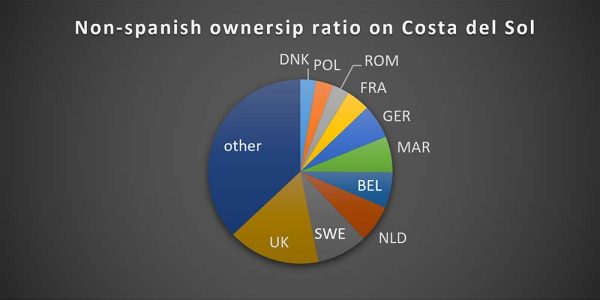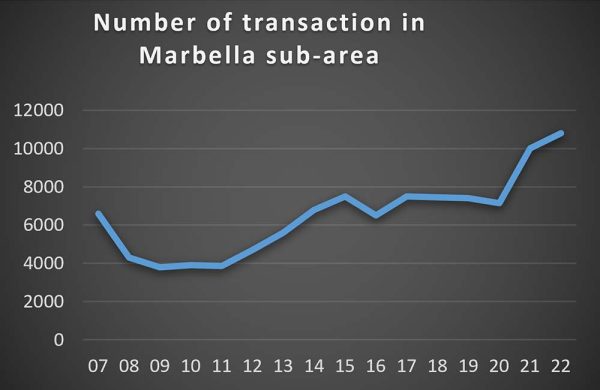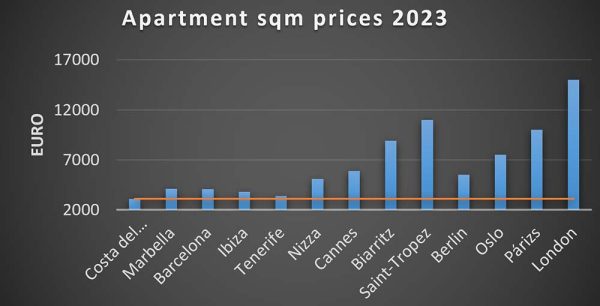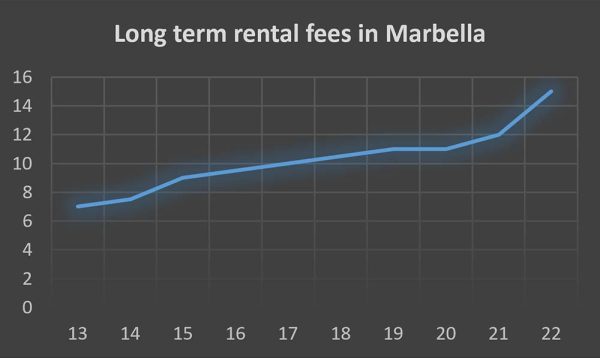Ideal for real estate investments
This well-known part of Spain with the bustling cities of Marbella, Puerto Banús and Estepona, is a 150 km long and 5-10 km wide coastline of the Mediterranean Sea from Gibraltar to Malaga. With 300 sunny days a year, the wonders of nature, dozens of golf resorts, hundreds of football, tennis and padel courts, thousands of bars and restaurants, as well as hundreds of thousands of settled foreigners and millions of tourists a year, the Costa del Sol is highly rated by travelers and is one of the most popular destinations for home seekers.
There would be many emotional reasons why to recommend the Costa del Sol for real estate investment. But starting an active real estate fund in this area was a strictly rational decision. There are many factors that make the Costa del Sol special and especially safe for real estate investors.
Although politically part of Spain, the Costa del Sol is an independent economic system. This is basically due to the fact that the region has become a special, multinational hub in the last 40 years, where the peoples of East and West, North and South, the Middle East, Africa and Europe meet, live and do business together. More than 20% of the permanent population is non-Spanish; but the proportion in Marbella exceeds 35%, and in many housing estates foreigners make up the majority. A significant proportion of the income spent here comes from various countries in Europe, the Mediterranean and South America.
The geographical location is very special: this region is the farest possible from the potential crisis zones of Europe and the Middle East, but at the same time it is the closest to South America. Malaga airport, which has 20 million passengers per year provides direct daily connections with numerous financial and economic centers such as Istanbul, Stockholm and London.
The real estate market is strong, well balanced and – with the exception of the credit market crisis of 2008 – has been developing for 40 years. The highly diverse composition of residents and new settlers conclude that political and regional risks are extremely low. A Spanish or any other regional recession or political crisis has no consequences, because if a group reduces its activity, others will take the place immediately. After Brexit or sanctions against Russia, the declining presence and activity of the British or the Russian was compensated by the increased activity of Scandinavians. If Sweden has economic problems, the Belgians or the South Americans make up for the loss. Non-Hispanic buyers represent 34% of the real estate market.

Despite the 14-year unbroken increase in prices, the market shows no signs of overheating, as the cause and structure of the increase are completely different from pre 2008 times:
- Barely 50% of current transactions is without mortgage, and this ratio is even lower for purchases made by foreigners. The dominant part of foreign customers buys not from monthly income, but from accumulated wealth, so demand is less sensitive to changes in interest rates and other market factors. The number of transactions is increasing in a trend-like fashion.
- The growing number of new residents generates constant demand on the real estate market. Property prices in the home country of foreigners are significantly higher than the average 3,200 EUR/m2 on the Costa del Sol. When a British, Norwegian, German, etc. decide to sell or lease at home and buy or rent in this region, then there is no real budget limit: the average prices in London are 15,000, in Oslo 7,500, in Berlin 5,500 EUR/m2.

- Property prices on the Costa del Sol, despite the dynamic rise of recent years, are significantly lower than those of similar coastal areas. Even in Marbella, which is considered a premium location, the 4,000 EUR/m2 of 2023 barely reach the pricing level of Barcelona or Tenerife. Catching up to the level of the Cote d’Azur or Italian Riviera would mean a 50-100% increase in prices.

- Despite the intense growth of recent years, prices are still 23% below the all-time record of 2007 – so there is still plenty of room for growth.
Tourism has been flourishing for decades. The Costa del Sol is one of Europe’s most popular destinations, with 13 million visitors a year, 8.0 times the population of 1.7 million. The same indicator shows 3.8 in Paris and a 2.0 in Rome. This exceptional rate and the 8 months long season generates constant demand for short-term rentals.
The supply has been well below the demand for several years. In particular the lack of apartments for long-term rent has become a serious problem, since newcomers do not necessarily want to buy before settling in, knowing well the area and crystallizing their specifications. At the same time, the hot and easy money of short-term rentals such as airbnb, significantly narrows the supply and drives up the prices of long-term rentals as well.

How we operate
The Fund manages its investment and operation activity by its own SPV, based on the Costa del Sol. That company directly deals with real estate agents, maintenance services, construction firms and development project managers.
